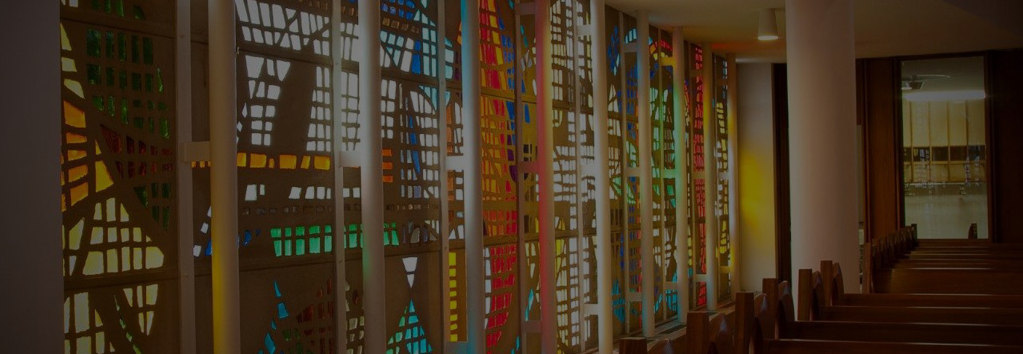Hope and Possibility as Spring Takes Hold
Beloved community,
Rebecca and I first heard Parker Palmer speak at Trinity Episcopal Church in lower Manhattan in April of 2002. We were attending a conference entitled “Spirituality in a Time of Crisis” three blocks from Ground Zero, where the World Trade Center had collapsed seven months earlier after the 9/11 attacks. Like many who had formerly lived in the metropolitan area, we had felt compelled to make our pilgrimage to Ground Zero and the ongoing excavation of that site to bear witness to the deep sense of loss many of us knew on that tragic day in 2001. When we had lived in downtown Jersey City as a young family, we had looked out our rowhouse front door at the World Trade Center across the Hudson River. We took advantage of the conference to provide the context for our pilgrimage back to the metro where our sons John and Ben were born across the river in Hoboken. It was a sobering, cathartic trip to a place of terror and tragedy, a place that had been our home, but the conference and that time of sojourn provided a genuine spirit of hope and recovery.
My educator wife and I had known about author, educator, and community activist Parker Palmer since he had published his remarkable The Courage to Teach: Exploring the Inner Landscapes of a Teacher’s Life in 2017. We looked forward to hearing him speak. However, in the context of the conference at old Trinity Church, we began to know Palmer’s gifts as a voice in creative spirituality and the nurturing of a holy hope on a societal scale. He might have been the most inspirational of the notable roster of speakers assembled for that three-day gathering in the spring of 2002.
Slowly emerging from another societal crisis after a long pandemic year, I was pleased when the Fetzer Institute in Kalamazoo published the following excerpt from Palmer’s writing late last month. From his “There Is a Season: A Meditation on the Cycles of Our Inner Lives,” Palmer’s writing on spring is not a particularly theological work, but he evokes a holy hope in his reflection. At the heart of this little essay, Palmer writes,
Spring teaches me to look more carefully for the green stems of possibility: for the intuitive hunch that may turn into a larger insight, for the glance or touch that may thaw a frozen relationship, for the stranger’s act of kindness that makes the world seem hospitable again.
Palmer’s is a voice for hope in a challenging time. Receive this essay as a gift befitting of the wonderful springtime days of this past week, as warm breezes accompany a world that is budding forth in new potential. After a long year of pandemic waiting, I hope for this spring to welcome a new day in our lives in community.
Palmer’s essay on spring:
I will wax romantic about spring and its splendors in a moment, but first there is a hard truth to be told: before spring becomes beautiful, it is plug ugly, nothing but mud and muck. I have walked in the early spring through fields that will suck your boots off, a world so wet and woeful it makes you yearn for the return of ice. But in that muddy mess, the conditions for rebirth are being created.
I love the fact that the word “humus”–the decayed vegetable matter that feeds the roots of plants–comes from the same word root that gives rise to the word “humility.” It is a blessed etymology. It helps me understand that the humiliating events of life, the events that leave “mud on my face” or that “make my name mud,” may create the fertile soil in which something new can grow.
Though spring begins slowly and tentatively, it grows with a tenacity that never fails to touch me. The smallest and most tender shoots insist on having their way, coming up through ground that looked, only a few weeks earlier, as if it would never grow anything again. The crocuses and snowdrops do not bloom for long. But their mere appearance, however brief, is always a harbinger of hope, and from those small beginnings, hope grows at a geometric rate. The days get longer, the winds get warmer, and the world grows green again.
In my own life, as my winters segue into spring, I not only find it hard to cope with mud but hard to credit the small harbingers of larger life to come, hard to hope until the outcome is secure. Spring teaches me to look more carefully for the green stems of possibility: for the intuitive hunch that may turn into a larger insight, for the glance or touch that may thaw a frozen relationship, for the stranger’s act of kindness that makes the world seem hospitable again.
Spring in its fullness is not easy to write about. Late spring is so flamboyant that it caricatures itself, which is why it has long been the province of poets with more passion than skill. But perhaps those poets have a point. Perhaps we are meant to yield to this flamboyance, to understand that life is not always to be measured and meted as winter compels us to do but to be spent from time to time in a riot of color and growth.
Late spring is potlatch time in the natural world, a great giveaway of blooming beyond all necessity and reason – done, it would appear, for no reason other than the sheer joy of it. The gift of life, which seemed to be withdrawn in winter, has been given once again, and nature, rather than hoarding it, gives it all away. There is another paradox here, known in all the wisdom traditions: if you receive a gift, you keep it alive not by clinging to it but by passing it along.
Of course, the realists will tell us that nature’s profligacy always has some practical function, and that may well be so. But ever since I read Annie Dillard on the immoderation of trees, I have had to wonder. She begins with a mental exercise to help us understand how superfluous in design an ordinary tree can be – if you doubt it, she suggests, try to make a faithful scale model of the next tree you see. Then, taunting the realists, she writes:
You are God. You want to make a forest, something to hold the soil, lock up solar energy, and give off oxygen. Wouldn’t it be simpler just to rough in a slab of chemicals, a green acre of goo?
From autumn’s profligate seedings to the great spring giveaway, nature teaches a steady lesson: if we want to save our lives, we cannot cling to them but must spend them with abandon. When we are obsessed with bottom lines and productivity, with efficiency of time and motion, with the rational relation of means and ends, with projecting reasonable goals and making a beeline toward them, it seems unlikely that our work will ever bear full fruit, unlikely that we will ever know the fullness of spring in our lives.
And where in the world did we get that “beeline” metaphor? Just watch the bees work in the spring. They flit all over the place, flirting with both the flowers and their fates. Obviously, the bees are practical and productive, but no science can persuade me that they are not pleasuring themselves as well.
Excerpted from “There Is a Season: A Meditation on the Cycles of Our Inner Lives,” written by author, educator, and activist Parker Palmer as a welcome to Fetzer’s retreat center, Seasons.
Blessings good people of Trinity. I pray that you will bear fruit on your spiritual journey this spring. May you be safe, may you be well, and may you be held in love.
It remains a privilege to serve as one of your pastors.
Grace and peace,


